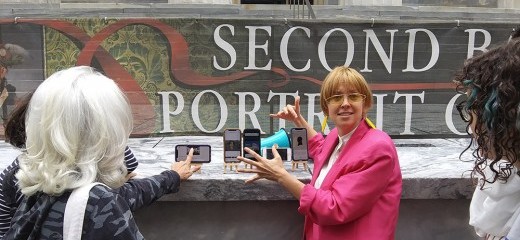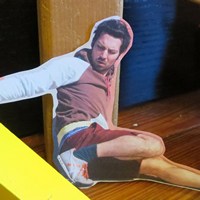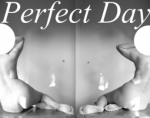
Re-contextualizing American History
by Thomas Choinacky
“The only thing I have to offer is my point of view.” With baby blue megaphone and hot pink jacket, our blithe escort and tour creator Jenna Horton* frames her “fallible” perspective on Philadelphia history. The Detour cleverly jabs at the typical American high school history textbook. In a two-hour walking tour of Philadelphia’s Old City, Horton zigzags her audience beyond the façade of this neighborhood’s Founding Father rhetoric.
As an audience we clump on a bench, collectively staring at the corner of Front and Market, and receive note cards with historical information. The brick building in front of us was once a public space where vendors (many black women) sold spicy pepper pot, a soup. It also was the London Coffee House, a merchant stop and locale where African slaves were auctioned. Centuries of humans layer onto this site where I am engulfed by our now bustling city. An older man gaily sings to himself as he waits for the 5 bus. Cars zoom onto I-95 South. An isolated statue of Tamanend, chief of the Lenni-Lenape (sculpted by Raymond Sandoval), stands to my left. In the note cards, several artistic renditions of this exact corner illustrate conflicting narratives. How easy it is to ignore and make invisible what and who has been here.
I have walked the streets of Old City many times, yet Horton re-centers my viewership of this grid. Every crack, monument, or fire hydrant has a story to tell. Place is layered in multiplicity. Horton offers us an affable introduction to question and zoom in upon. How does the city present itself? Who is telling its story? What and who gets lost?
Horton’s tour amusingly probes six sites and thoughtfully digs into lesser known histories and figures. I am introduced to Jarena Lee, the first African American woman to have her autobiography published, and former slave Moses Williams, a prolific silhouette artist. Additionally, I learn of the hundreds of buildings demolished to provide the viewshed of Independence Mall in the 1950s. These points re-contextualize our city’s focus on the colonizing Europeans and emphasize control. Horton’s glib perspective offers an opportunity to reframe, initiates a re-learning, and opens the door for us to consider the powers manipulating our history.
In between locations Horton halts us to acknowledge the chewing gum on the sidewalk. From years past, even decades, these blackened spots define a minuscule moment. Now in observing, their features have a past too, yet the gum chewers are long forgotten. How do I learn from the city’s surface? From church steeples to designed tree pits, each present their own point of view. They highlight one account and hide another perspective. How easy it is to tell just one version of history.
*Horton is a former writer with thINKingDANCE.
The Detour, Jenna Horton, Welcome Park, 2019 Free Fringe Festival and ongoing.
By Thomas Choinacky
September 14, 2019










